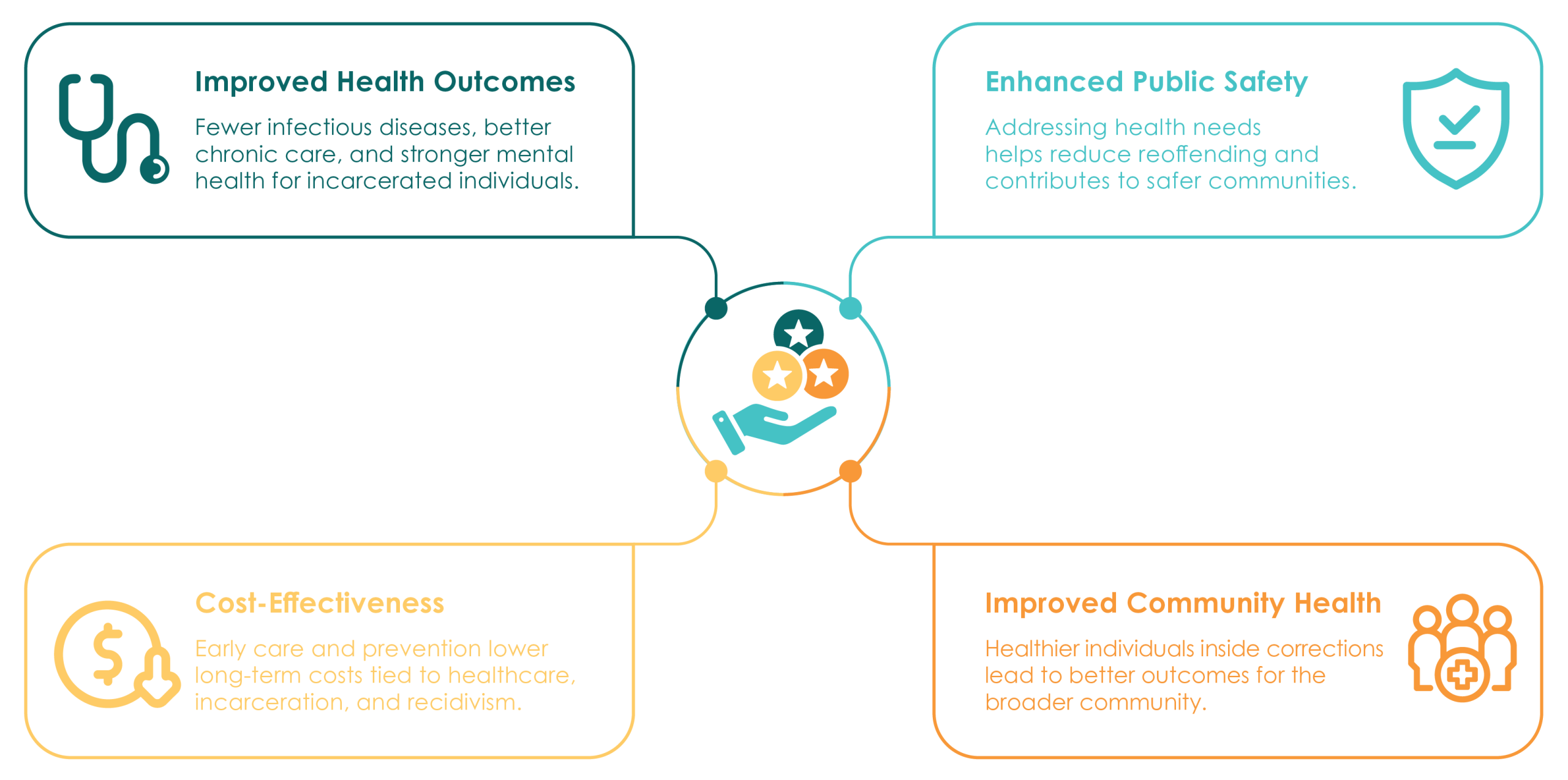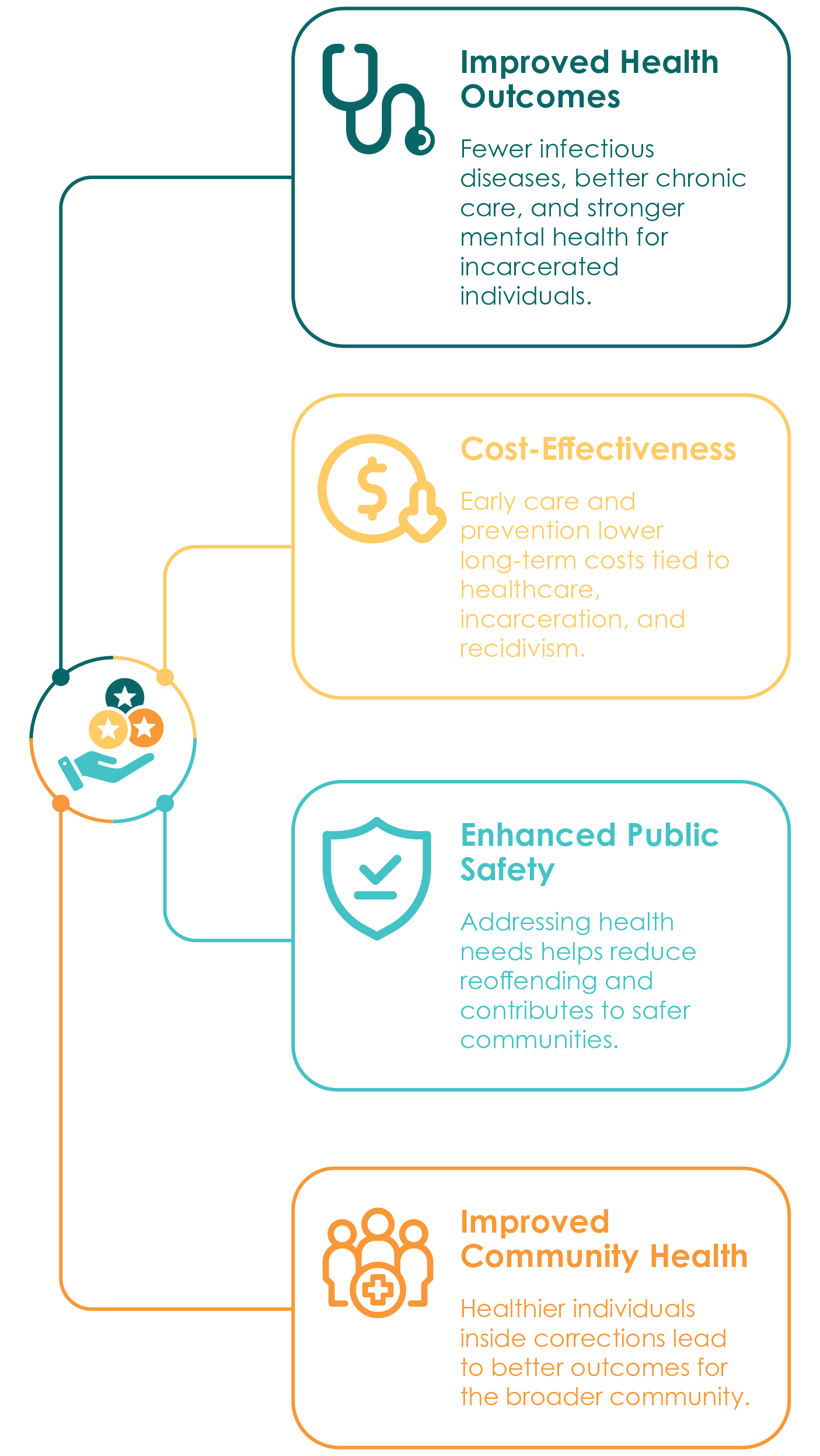Public Health Model Overview
The public health model for corrections is a framework that emphasizes the following key principles:
Community-Based Approach
Recognizing that incarcerated individuals are members of the community and that their health impacts the broader community.
Focus on Prevention
Prioritizing interventions that prevent the spread of infectious diseases (like HIV, hepatitis, tuberculosis) and address underlying health issues (like mental health, substance use disorders) to improve overall health outcomes.
Continuity of Care
Ensuring a smooth transition of healthcare services from the correctional setting back into the community. This includes connecting individuals with community-based resources and providers upon release.
Collaboration
Fostering strong partnerships between correctional facilities, public health agencies, community-based organizations, and healthcare providers to ensure comprehensive and coordinated care.
How the Public Health Model Drives Better Outcomes


Key Features
Disease Surveillance and Outbreak Response
Active monitoring for infectious diseases within the correctional setting. Rapid response to outbreaks to prevent further spread.
Comprehensive Health Services
Providing a wide range of healthcare services, including primary care, mental health care, substance use treatment, and chronic disease management.
Health Education
Implementing programs to educate incarcerated individuals about healthy behaviors, disease prevention, and available resources.
Risk Reduction Strategies
Implementing strategies to reduce the transmission of infectious diseases, such as needle exchange programs and harm reduction strategies.
Reentry Planning
Developing individualized reentry plans that address healthcare needs and connect individuals with community resources upon release.